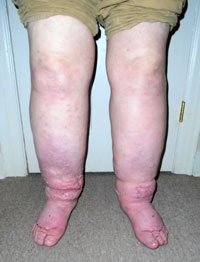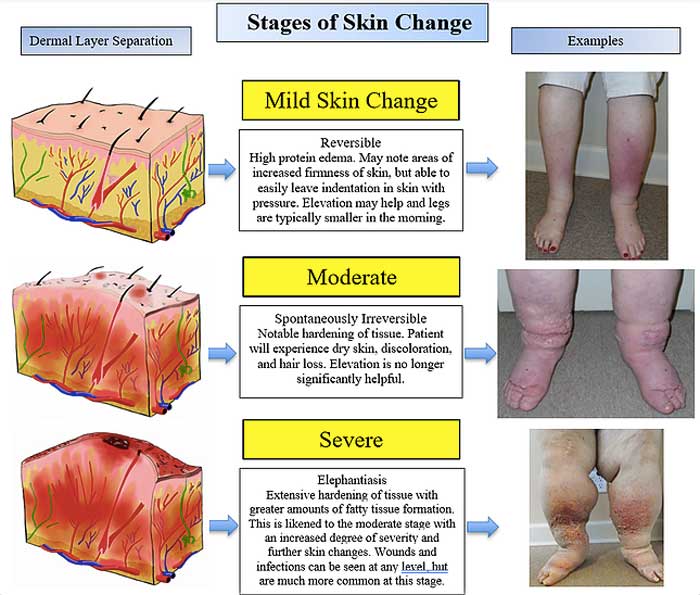Lymphedema is the stagnation of protein-rich lymph fluid in the superficial tissues, which can have significant pathological and clinical consequences for a patient left untreated. Lymphedema can result in an abnormal amount of protein fluid collecting the tissues of the extremity. This stagnant, protein rich fluid not only causes tissue channels to increase in size and number, but also reduces oxygen through the port system, which interferes with wound healing and provides a culture of medium for bacteria that can result in various infections. A chronic inflammatory condition stemming from this accumulation of fluid eventually results in fibrotic or hardened tissues. Once present, this chronic and progressive condition will not disappear again. Swelling can occur in any area of the body, most often noted in the arm or the leg.







